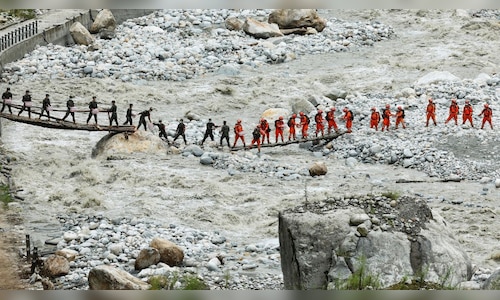
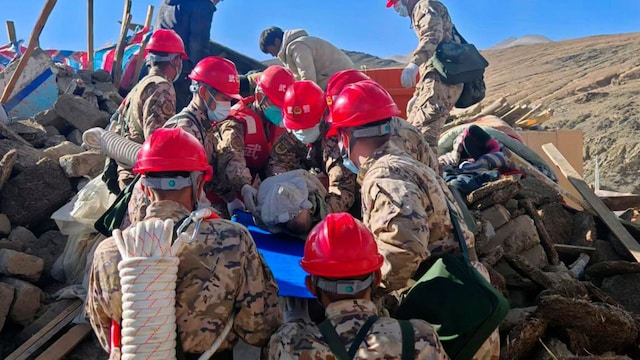
Rescue operations and relief efforts | Rescue operations continued on Wednesday, as thousands of displaced survivors braved sub-zero temperatures while relief teams raced to provide aid. Tents, quilts, and essential supplies have been sent to affected areas, offering temporary shelter to those left homeless. (Image: Reuters)
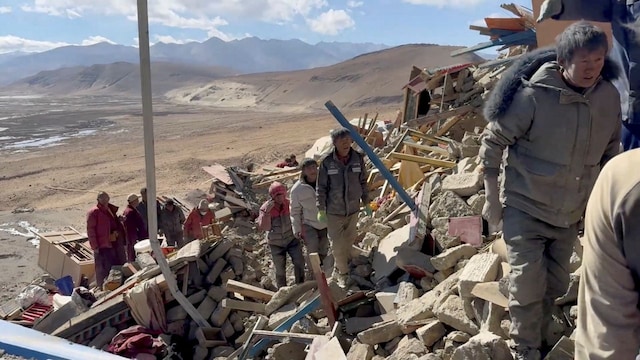
At altitudes averaging 4,200 metres (13,800 feet), freezing temperatures pose significant challenges to survivors and rescuers. The China Earthquake Networks Centre (CENC) recorded the earthquake at 6.8 magnitude, while the US Geological Survey measured it at 7.1. (Image: Reuters)
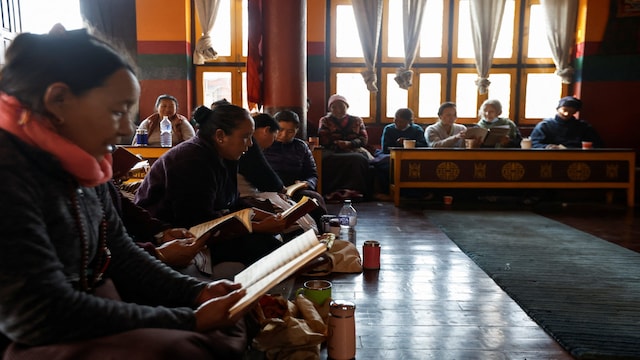
Tibetans in Nepal gathered at a monastery in Lalitpur’s Tibetan Refugee Camp to offer prayers in remembrance of the victims of the recent earthquake. (Image: Reuters)
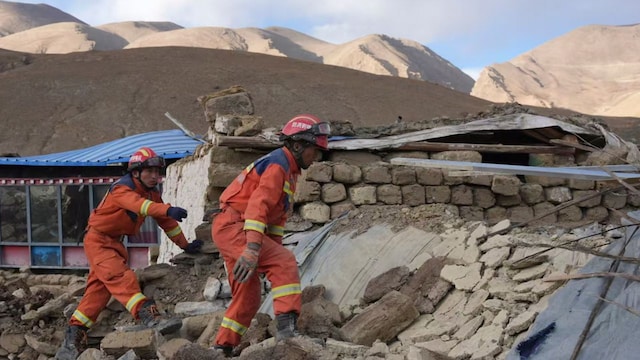
Mount Everest region severely affected | The earthquake struck near the Tsogo township in Dingri County, approximately 75 kilometres from Mount Everest and near the Nepal border. Tremors caused panic as far away as Kathmandu, Nepal, and parts of India. (Image: Reuters)
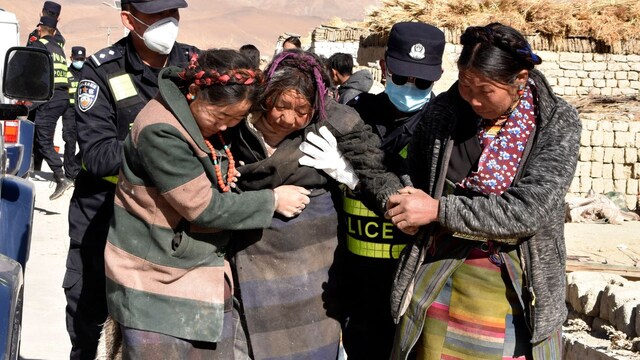
In Gurum village, one of the worst-hit areas, 22 out of 222 residents lost their lives. Tsering Phuntsog, the village’s Communist Party chief, mourned the loss of his 74-year-old mother and other relatives still buried under the rubble. “Even young people couldn’t run out of the houses when the earthquake hit, let alone old people and children,” he told Xinhua News Agency. (Image: Reuters)
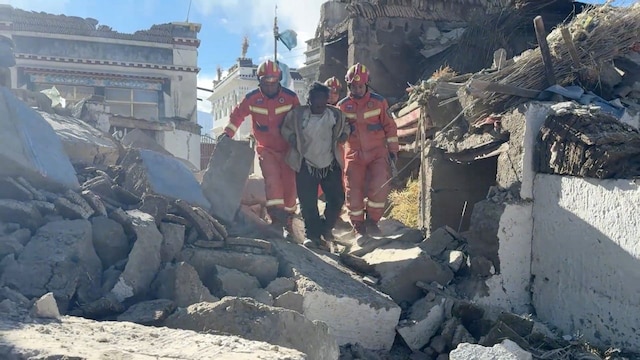
Widespread destruction | More than 3,600 homes have collapsed, forcing the relocation of around 30,000 residents, according to local authorities in Shigatse. The Ministry of Emergency Management reported that 1,850 rescuers, including firefighters and medical teams, are on-site, despite the complications posed by over 500 aftershocks. (Image: Reuters)
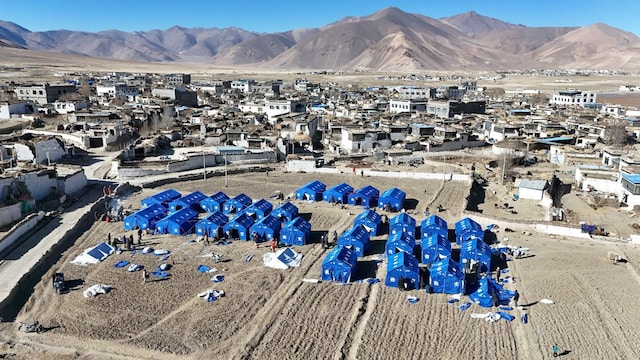
Footage from state-run media showed rescuers pulling survivors from debris and transporting them to makeshift medical camps. The epicentre, located in the Tsogo township, is home to roughly 6,900 residents within a 20-kilometre radius.(Image: Reuters)
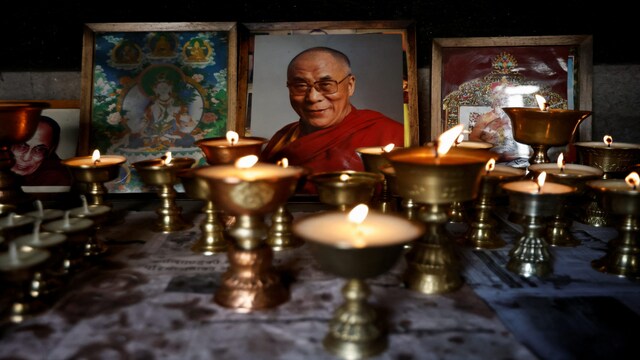
Calls for urgent action | China’s President Xi Jinping has called for “all-out rescue efforts” and urged authorities to prevent secondary disasters. Tibetan spiritual leader the Dalai Lama expressed his condolences, offering prayers for the victims and wishing a swift recovery to the injured. (Image: Reuters)
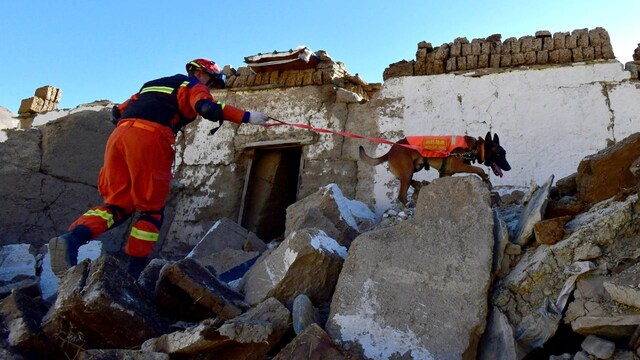
In Nepal, where strong tremors were felt, no casualties or major damage have been reported. However, experts warn of possible aftershocks in the coming days. (Image: Reuters)
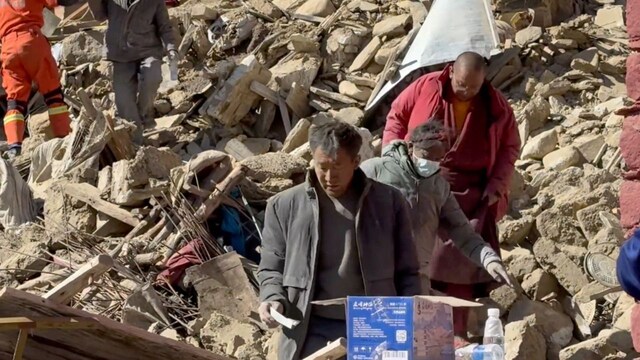
A fragile region | The Tibetan plateau, where the Indian and Eurasian tectonic plates collide, remains a high-risk seismic zone. The disaster has reignited concerns about China’s plans to build the world’s largest dam on the Brahmaputra River, near Arunachal Pradesh. Critics argue such projects increase ecological vulnerability in the already fragile region. (Image: Reuters)
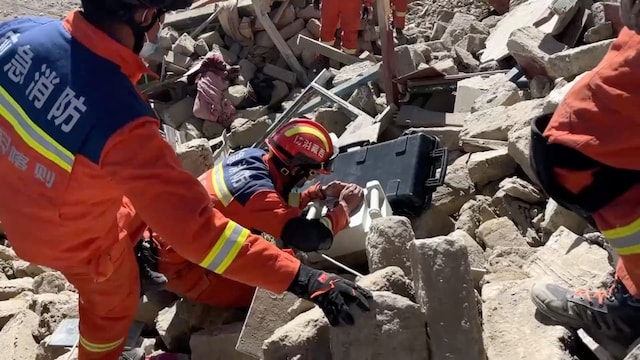
Historical parallels | The tragedy has drawn comparisons to the 2015 earthquake that killed 9,000 people in Nepal and 18 in Shigatse. Experts predict the current death toll could rise as rescue operations progress. (Image: Reuters)



